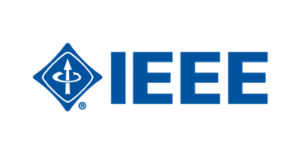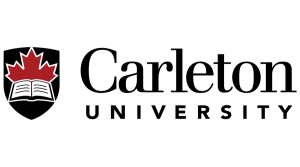Thursday, May 19, 2022, from 12:30 pm – 2:00 pm
Moderator: Mr. Raed Abdullah, P.Eng., SM IEEE, Hydro Ottawa, Ottawa, Ontario
1. SI Realization and Dissemination of Optical Radiation Metrology
from the National Research Council (NRC) Canada to Industry
by Dr. Angela Gamouras, Researcher, NRC Metrology Research Centre
Abstract – National Research Council (NRC) Canada has been establishing new facilities and improving measurement capabilities traceable to the International System of Units (SI) in optical radiometry. The radiometric quantities of optical power and spectral irradiance are of great importance to Canadian industries and research and technology organizations as they enable top-level calibrations of light-sensitive devices as well as the characterization of broadband light sources for commercial and scientific applications. This presentation will discuss Canada’s primary realizations and the dissemination of the optical radiant power and spectral irradiance scales.
Speaker’s Bio – Dr. Angela Gamouras is a Researcher in the Metrology Research Center at the National Research Council (NRC) Canada, where she is responsible for Canada’s primary scale realizations of optical power and spectral irradiance, and has been developing efforts in few-photon metrology. She is also an Adjunct Professor at the University of Ottawa and a fellow of the NRC-uOttawa Joint Center for Extreme Photonics. Dr. Gamouras holds a Ph.D. in Physics from Dalhousie University where her thesis research focused on ultrafast quantum control of semiconductor quantum dots for quantum computing applications.
2. Optical Instrumentation and Measurement for Leading-Edge Silicon Photonics Products
by Dr. Doug Beckett, VP of Optical Technologies, RANOVUS
Abstract – Enabled by the single-chip integration of optics and advanced electronics, silicon photonics chips now feature real-time, high-speed, and high-precision optical measurement capability. We will review some of the emerging Instrumentation and Measurement requirements that will be applicable across research, development and production for these fully integrated SiP platforms. Examples will be given using Ranovus’ ODIN platform, particularly the 800 Gb/s ODIN8P product recently demonstrated at OFC 2022 by AMD-Xilinx.
Speaker’s Bio – Dr. Doug Beckett is responsible for optical system research and active optical device development at RANOVUS. He likes thinking about science and deeply admires those that can engineer successful products. Doug has more than 30 years of experience developing networking and telecom products, spanning laser design, crystal growth and optical systems. Applications range from intra-data-center to WDM PON to ultra-long-haul coherent DWDM transport networks. Prior to joining Ranovus, Doug held roles both at start-up companies and established network equipment manufacturers, including Nortel, Ceyba, Core Optics and Ciena. He began his career in the Advanced Technology Group at Bell-Northern Research, where he designed Nortel’s first widely-deployed 1550 nm strained-quantum-well DFB laser. Doug received his Ph.D. in Physics from Simon Fraser University in Burnaby, British Columbia, studying photoluminescence of semiconductors.
3. The Role of Software in the Design and Simulation of Optical & Photonics
Devices, Components and Systems
by Dr. Ahmad Atieh, VP, Optiwave Systems Inc., Canada
Abstract – Optiwave Systems Inc. offers diverse software tools that are used in the design, simulation and optimization of the parameters of photonics components, links, systems and networks. These software packages include OptiSystem, OptiSPICE, OptiInstrument, OptiBPM, OptiMode, OptiFDTD, OptiGrating, and OptiFiber.
OptiInstrument software allows users to communicate with instruments and automate their operation using remote control scripts. The software can also be used for testing and characterization of equipment in the lab or at the manufacturing floors. Recently, OptiInstrument is integrated with OptiSystem software version 19.0 allowing the use of measured data of devices and modules in the simulation of optical systems. A newly added component to OptiSystem software called Equipment Comm. and Control has an API facilitating the integration between the two software packages. The component can either call OptiInstrument software though an API or load measured data files into it. This feature enables engineers and researchers a full flexibility to analyze their designs.
Speaker’s Bio – Dr. Ahmad Atieh is a VP at Optiwave Systems Inc. Canada. He received his B.Sc. degree in Electrical Engineering from Yarmouk University, Jordan, M.Sc. degree in Electrical Engineering from the Jordan University of Science and Technology, and Ph.D. degree in Electrical Engineering from the University of Ottawa, Canada. He has contributed more than 100 technical papers in different refereed journals and at international conferences. He holds over 25 issued patents and several patents pending. His current research interests are in the fields of optical fiber communication systems including optical fiber characterization, optical amplifiers, nonlinear fiber optics, and optical communication transmission systems.
4. Integrated Astrophotonics: From Exoplanet Science to Real Applications
by Dr. Ross Cheriton, Researcher, NRC Advanced Electronics and Photonics Research Centre
Abstract – Bulk optics are widely used for sensing applications in astronomy, remote sensing and telecommunications. However, integrated photonics is emerging as not only a cost-effective alternative, but high performance optical device platform. In this talk, we show how our new ideas we are developing for exoplanet imaging and atmosphere biosignature detection can be applied towards Earth-based sensing and communication applications for improved performance and capability. For gas sensing, we discuss how a simple waveguide nanophotonic ring resonator can operate as a high resolution integrated photonic correlation filter for a high sensitivity remote gas and radial velocity sensor, ideal for exoplanet biosignature hunting as well for sensing gases here on Earth. We present an on-sky demonstration of remote gas correlation sensing using sunlight coupled from a single-mode fiber collimator into a silicon ring resonator. We also discuss our work on integrated photonic optical interferometry, which can not only enable exoplanet imaging, but high bandwidth optical satellite communications.
Speaker’s Bio – Dr. Ross Cheriton is a Researcher at the National Research Council of Canada in the Advanced Electronics and Photonics Research Centre. He received his PhD in Physics in the SUNLAB group at the University of Ottawa with research on the theory and characterization of gallium nitride nanowire intermediate band solar cells on silicon. His past research topics include III-V on silicon solar cells, concentrator multijunction solar cells, quantum dot/well theory, entangled photon sources, and nanowire solar cells. He has worked for a startup company developing the photovoltaics system for diamond retinal implants. His current work is currently focused on integrated photonics for astronomy, sensing and communication on Earth and in space.
5. Quantum Photonics Standards Development for Next Generation Telecommunications Technologies
by Dr. Angela Gamouras, Researcher, NRC Metrology Research Centre
Abstract – Single-photon detectors and emitters are being increasingly implemented in a variety of applications including quantum communications and sensing. As these types of measurements rely on the accurate detection and known emission properties of single photons, National Metrology Institutes around the world, including the National Research Council Canada, have been developing characterization techniques and reference standards for single-photon technologies. This presentation will discuss ongoing efforts in this area, including the need to incorporate characterization methodologies into the design of quantum integrated circuits and similar disruptive technologies.
Speaker’s Bio – Dr. Angela Gamouras is a Researcher in the Metrology Research Center at the National Research Council (NRC) Canada, where she is responsible for Canada’s primary scale realizations of optical power and spectral irradiance, and has been developing efforts in few-photon metrology. She is also an Adjunct Professor at the University of Ottawa and a fellow of the NRC-uOttawa Joint Center for Extreme Photonics. Dr. Gamouras holds a Ph.D. in Physics from Dalhousie University where her thesis research focused on ultrafast quantum control of semiconductor quantum dots for quantum computing applications.








